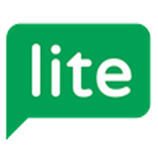
How We Started A $2K/Month Plants Ecommerce Using No Code Tools
Note: This business is no longer running. It was started in 2020 and ended in 2022. Reason for closure: Shut down.
Hello! Who are you and what business did you start?
We are two friends (Javier and Daniel) that have built several businesses together during the last 20 years. Javier is the technical guy and Daniel is the running business guy. We have built an e-commerce business.
We sell natural garden kits with air plants (a specific type of plant that does not need substrate and requires low maintenance) and other natural decorative elements (like glass vases, wood sticks, sea urchins, and others) to people that like home decoration and original gifts. We have been running the business for around 4 months and our average monthly revenue is around $2K.

What's your backstory and how did you come up with the idea?
We both have more than 20 years of experience working in different industries (Javier in technology and marketing and Daniel in tourism) but since we were 20 years old we have undertaken several projects together.
The idea came from Daniel's interest in air plants and Javier's desire to try how to build an eCommerce from scratch. The original idea was to sell only plants but we saw that it was difficult to differentiate ourselves and that's when we decided to sell something more exclusive and elaborate.
Execute, execute, execute, based on a plan, but execute and iterate fast.
Neither of us had previous experience in setting up an eCommerce but we are very used to the Internet world, online marketing, and No Code technologies so we were able to test the idea quickly with very little investment and a few weeks of work on the product and the technology part.
Take us through the process of designing, prototyping, and manufacturing your first product.
The product creation process starts from having a design idea around the concept of air plants and sea urchins. Once we have an idea, we calculate the price range based on the elements that make up the kit and value the price variable to understand if it is a product that can have a product-market fit based on our experience.
Once we see that it makes sense, we buy the retail elements to assemble the prototype and prepare the photos and description for the eCommerce, as well as the assembly instructions.
We put 1 unit on sale and observe the response from users. If it is positive, we buy product stock in volume to generate economies of scale.
Describe the process of launching the business.
Our launch was very fast. From the time we got together the first time and decided what products we were going to sell until we had our first customer, it took about 5 weeks. Our project is 100% bootstrapped and self-funded by us and our progressive approach to growth has made us break even practically from the first month.
The approach of using No Code tools (like Shopify) made the technological part (which is usually the slowest and most expensive) very fast. Our advice in this regard is not to start a project by making a big investment in technology. It is much better to try and if you have to fail, fail fast and cheap.
Our biggest learning in this launch was that pricing the product is very complicated and it is necessary to do a lot of tests to find the price sensitivity. It is also necessary to follow a systematic approach to understand purchase drivers, customer segments, channels, etc. For us, the most complicated thing has been to achieve profitable user acquisition through digital marketing.
Since launch, what has worked to attract and retain customers?
From day 1 we have opted for 2 ways to attract new clients: organic and paid, both focused on social networks. We have Instagram and Facebook accounts where we generate content regularly and we use paid advertising on Facebook, Instagram, and Google Shopping. On the other hand, we use mailing campaigns mainly to recover abandoned carts and to notify new product launches.
Regarding advertising, we use prospecting campaigns using interests and look alike based on the audiences we generate and retargeting campaigns for users who have visited one of our products with a promotion to encourage conversion.
Today we are at the point of trying to understand the behavior of our users/customers to try to generate some predictability. It is complicated because our products are not impulsive consumption and are usually associated with temporary moments in which special gifts are made, so it is a sale with a certain seasonality.
How are you doing today and what does the future look like?
As of today, we are at break-even although we are making an important investment in publicity to make ourselves known.
In the short term, our challenge is to scale the business while keeping recruitment costs contained. This scale would allow us to outsource the preparation of the products, as we currently do everything ourselves.
In the medium term, our challenge is to generate economies of scale to be able to reduce costs and work with larger suppliers. We are also planning to expand to very specific countries in the next 2 months, where the product we have fits very well with their tastes and where price sensitivity is perhaps lower than in the regions where we are now.
Through starting the business, have you learned anything particularly helpful or advantageous?
There are a couple of things that we believe are fundamental and give us a competitive advantage.
The first is to have a different product, trying to compete in a different segment than the rest and thus be able to have higher average tickets and thus optimize operations.
The second is to go out of our way to serve customers and capture that value through feedback tools like Trustpilot. Technology allows us to have immediate and flexible customer service channels, something that customers value highly, especially when they are going to buy a product with a high average ticket. We also take care of every detail of the after-sales service, trying to solve any problem as quickly and effectively as possible, regardless of the cost to us.
What platform/tools do you use for your business?
Our entire business is based on No Code / Low Code tools.
We use Shopify, Carrd, Integromat, Glide, AppSheet, Holded, Google Spreadsheet and MailerLite to handle the whole business including the most complicated part which is stock management.
What have been the most influential books, podcasts, or other resources?
Regarding podcasts we recommend: KFund, Itnig, and Nocodehackers.
Some books that have also inspired us are Hacking Growth by Senan Ellis and The Lean Startup by Eric Ries.
Advice for other entrepreneurs who want to get started or are just starting?
Execute, execute, execute, based on a plan, but execute and iterate fast.
Do something you like. You have to have a product or service that you like, that you would buy.
Surround yourself with a complementary team that has the same entrepreneurial values as you. Entrepreneurship is hard and there are difficult moments and if there is no harmony between team members it will be difficult to manage those moments.
Where can we go to learn more?
- Website
- Trustpilot
- Qué son las plantas de aire (What are air plants?)
If you have any questions or comments, drop a comment below!

Download the report and join our email newsletter packed with business ideas and money-making opportunities, backed by real-life case studies.

Download the report and join our email newsletter packed with business ideas and money-making opportunities, backed by real-life case studies.

Download the report and join our email newsletter packed with business ideas and money-making opportunities, backed by real-life case studies.

Download the report and join our email newsletter packed with business ideas and money-making opportunities, backed by real-life case studies.

Download the report and join our email newsletter packed with business ideas and money-making opportunities, backed by real-life case studies.

Download the report and join our email newsletter packed with business ideas and money-making opportunities, backed by real-life case studies.

Download the report and join our email newsletter packed with business ideas and money-making opportunities, backed by real-life case studies.

Download the report and join our email newsletter packed with business ideas and money-making opportunities, backed by real-life case studies.













